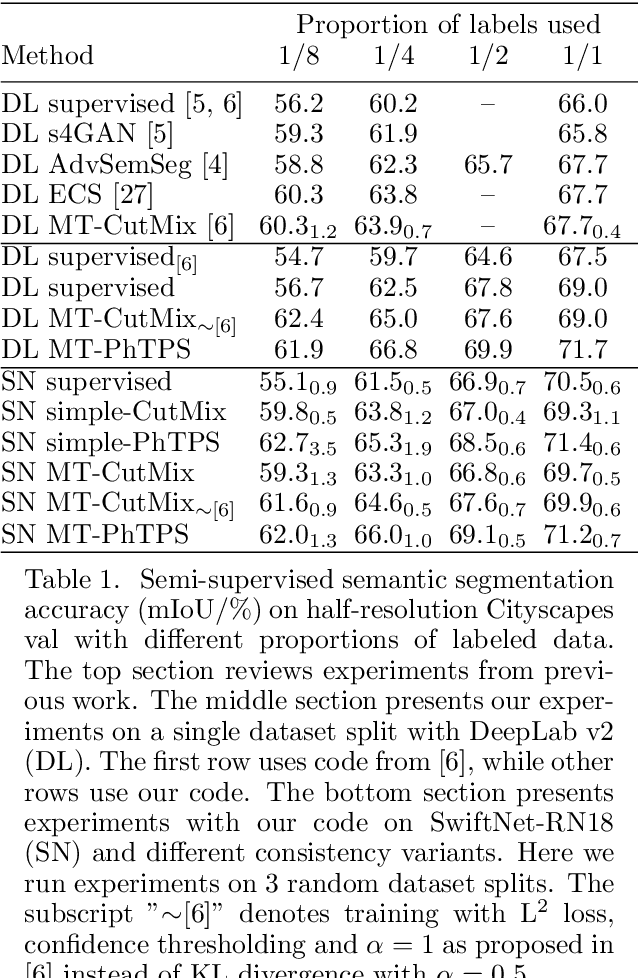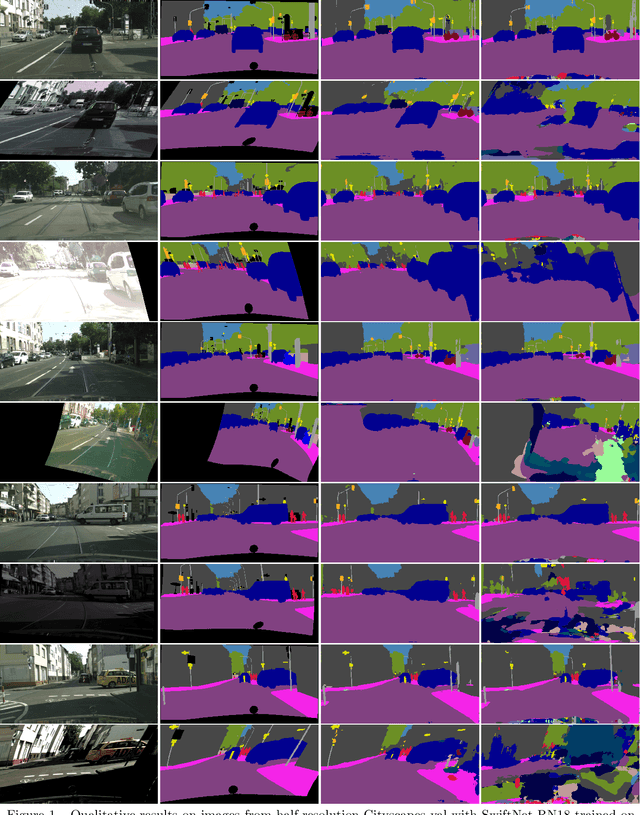A baseline for semi-supervised learning of efficient semantic segmentation models
Paper and Code
Jun 15, 2021

Semi-supervised learning is especially interesting in the dense prediction context due to high cost of pixel-level ground truth. Unfortunately, most such approaches are evaluated on outdated architectures which hamper research due to very slow training and high requirements on GPU RAM. We address this concern by presenting a simple and effective baseline which works very well both on standard and efficient architectures. Our baseline is based on one-way consistency and non-linear geometric and photometric perturbations. We show advantage of perturbing only the student branch and present a plausible explanation of such behaviour. Experiments on Cityscapes and CIFAR-10 demonstrate competitive performance with respect to prior work.
 Add to Chrome
Add to Chrome Add to Firefox
Add to Firefox Add to Edge
Add to Edge